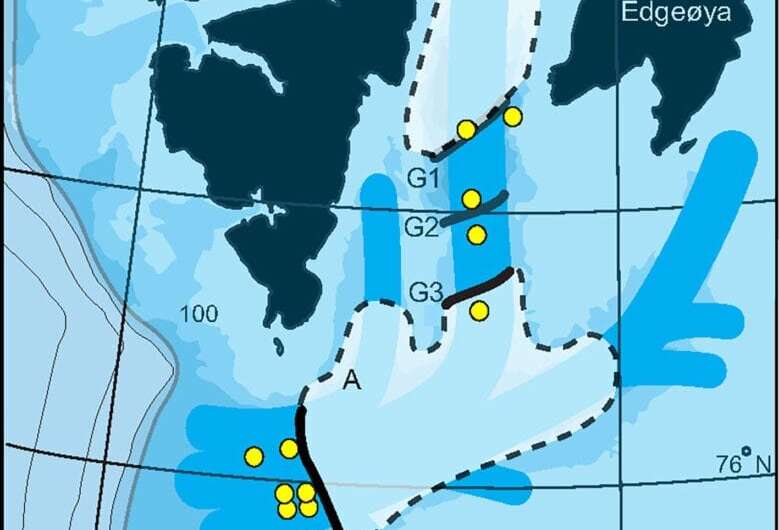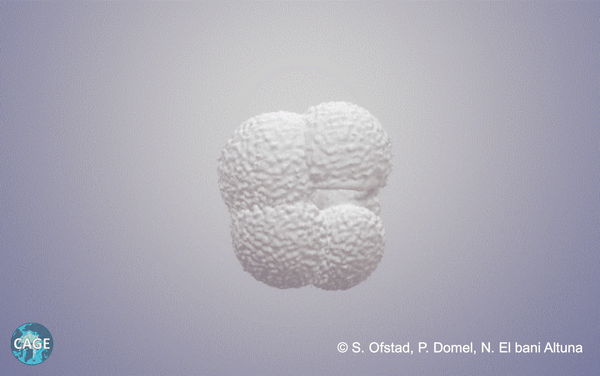Rapid ice retreat during last deglaciation parallels current melt rates

10,000 km2 of ice disappeared in a blink of an eye from an ice sheet in the Storfjorden Through offshore Svalbard, a new study shows. This dramatic break off was preceded by a rapid melt of 2.5 kilometers of ice a year. This parallels the current melt rates in Antarctica and Greenland and worries the scientists behind the study.
"Our measurements of the ice retreat in Storfjorden Through show that the prevailing conditions to the great break off match what we see in Antarctica and Greenland today. It is uncanny. There are new studies published almost weekly that show that the retreat of current ice sheets is two to four km a year and that it's speeding up." Says CAGE-professor and first author Tine Lander Rasmussen.
Climatically unstable period
The last deglaciation, 20,000-10,000 years ago, was a period of coexisting global warming and rapidly shrinking ice sheets. But stating the actual correlation between the two is not as simple as it sounds. The period in question was climatically unstable, and big melts were interrupted by re-freezing and formation of new ice. The speed of the ice retreat, relative to climatic changes, has therefore been difficult to establish.
"We have studied the ice sheet development 20,000-10,000 years ago using marine sediment cores. The 12 cores have been collected in the area during the past 18 years, and meticulously analyzed for different types of microfossils of single-celled organisms called foraminifera," says Rasmussen.
The biochemistry in the foraminifera fossils helps reconstruct the enormous amount of information about the state of the environment in prehistoric times. The sediments were sliced up in slices representing time periods of 30 to 70 years. Over 70 samples were dated and analyzed.
"What we saw is that the ice sheet starts retreating some 20,000 years ago but lingers on a ridge in the fjord. Then, some 15,000 years ago the atmosphere and ocean temperatures warm up, impacting the ocean circulation. A huge chunk of the ice sheet disappears at the same time. At the start of the Holocene warm period, 11,000 years ago, things really pick up speed. We can't see any more evidence of an ice sheet covering the ocean floor after that time."

Consistent correlation between global warming and ice retreat
The periods of extremely rapid ice sheet retreats are consistently correlating with periods of global warming of oceans and temperature. This is mirrored in ice sheet retreat from other eight Northern Norwegian fjord systems.
"This is strengthening our hypothesis that an increase in ocean temperature and global warming is the direct cause of the chain of the events leading up to the dramatically rapid ice sheet disintegration," says Rasmussen.
This gives some alarming perspectives on present-day outlook. The great melt of the glacial maximum to the Holocene was 10,000 years in the making. The present climate change is much more rapid.
"The final retreat of the Storfjorden Through ice sheet happened as rapidly in the outer parts as it did further up the through. This means that as soon as warmer oceanic water got access to the ice sheet, it surged pretty rapidly inward from the edge of the ice shelf. To the interior of the sheet itself. We see this happening in Antarctica today. The Larsen A (1995), B (2003) and C (2017) break-offs are examples of this process. "
More information: Tine L. Rasmussen et al, Climate and ocean forcing of ice-sheet dynamics along the Svalbard-Barents Sea ice sheet during the deglaciation ∼20,000–10,000 years BP, Quaternary Science Advances (2020). DOI: 10.1016/j.qsa.2020.100019
Provided by UiT The Arctic University of Norway

















